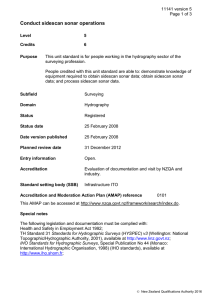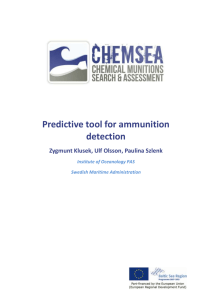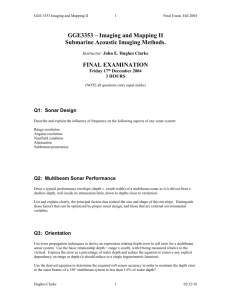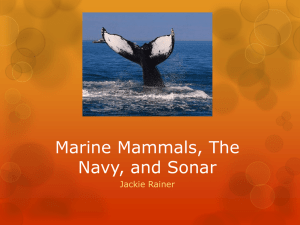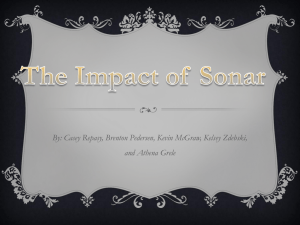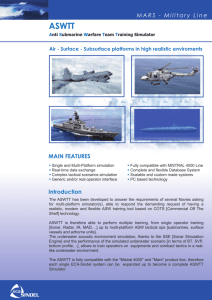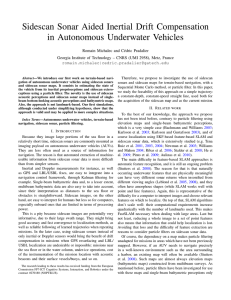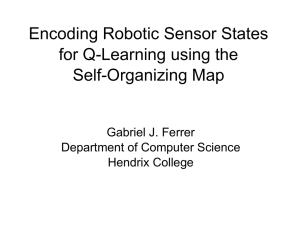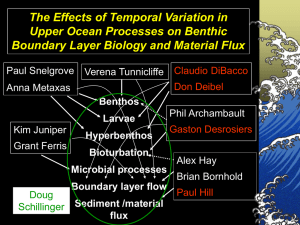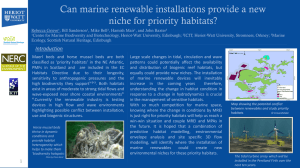Interactive PowerPoint Slides
advertisement
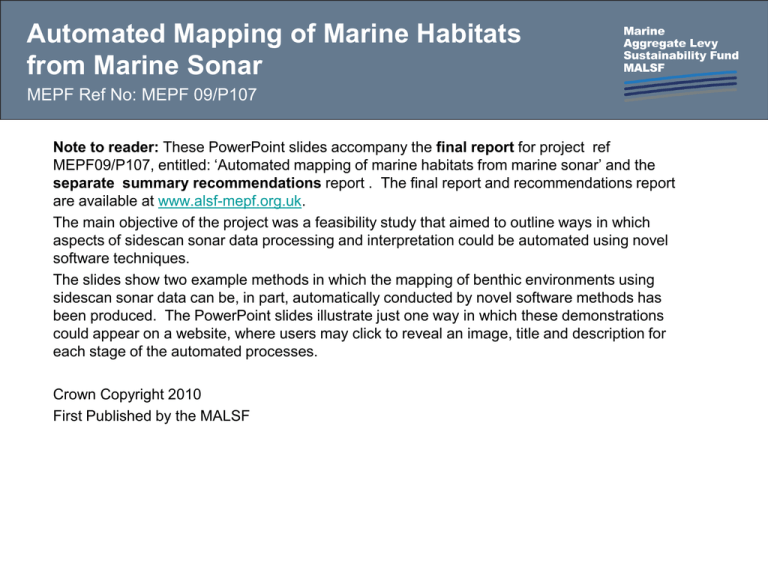
Automated Mapping of Marine Habitats from Marine Sonar MEPF Ref No: MEPF 09/P107 Note to reader: These PowerPoint slides accompany the final report for project ref MEPF09/P107, entitled: ‘Automated mapping of marine habitats from marine sonar’ and the separate summary recommendations report . The final report and recommendations report are available at www.alsf-mepf.org.uk. The main objective of the project was a feasibility study that aimed to outline ways in which aspects of sidescan sonar data processing and interpretation could be automated using novel software techniques. The slides show two example methods in which the mapping of benthic environments using sidescan sonar data can be, in part, automatically conducted by novel software methods has been produced. The PowerPoint slides illustrate just one way in which these demonstrations could appear on a website, where users may click to reveal an image, title and description for each stage of the automated processes. Crown Copyright 2010 First Published by the MALSF Automated Mapping of Marine Habitats from Marine Sonar MEPF Ref No: MEPF 09/P107 Bream Nest Example Acquisition Sidescan sonar imagery is obtained from the survey vessel. Contrast Adjustment Imagery is contrast adjusted to highlight subtle features. Thresholding High contrast areas are isolated, and dull areas, that are likely not to contain any features of interest, are discounted. Object Isolation Analysis & Classification The size and connectedness of each object is measured and objects smaller than a certain size are ignored, since they are probably background noise. The remaining objects are counted and their size and shape is measured. Those that appear round, of a particular size and in close proximity to other similar objects are classified as bream nests and verified by a human expert. Automated Mapping of Marine Habitats from Marine Sonar MEPF Ref No: MEPF 09/P107 Neural Network & Mussel Bed Example Acquisition Sidescan sonar imagery is obtained from the survey vessel. It shows an area with two different kinds of seabed environments. Training The neural network is trained to recognize common acoustic signatures using example data. Classification Using its knowledge base, the neural network classifies sidescan sonar imagery by comparing the likeness of the real data to the examples that it knows. In this case white areas are classified as mussel bed. Boundary Definition The outer boundary of the area classified as mussel bed is automatically calculated and georeferenced, making the mussel bed habitat ready for plotting on a map.

